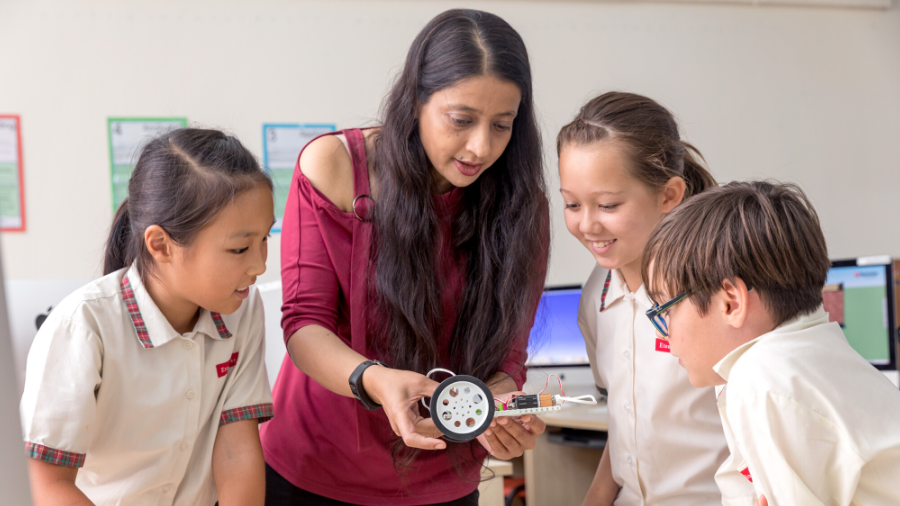There has been a growing emphasis on STEAM education in schools around the world. An educational approach with a focus on Science, Technology, Engineering, Arts and Mathematics, STEAM aims to develop problem-solving and creative thinking skills. Through the process, students become incredibly engaged, motivated and inspired to innovate.
What does this mean for our children, and how does it prepare our children for the future?
We speak to Niru Raghuram, Year 6 homeroom teacher of EtonHouse Broadrick and Olivia Jane Davenport, Secondary science teacher of EtonHouse Orchard.
1) Why is it important to incorporate STEAM into the curriculum?
STEAM combines many disciplines to enable students to solve real-life problems and provide fantastic opportunities to bring real-world applications to the classroom, preparing them for life beyond the classroom.
It encourages the teaching and learning of Science, Technology, Engineering, Arts & Maths through creative cross-disciplinary approaches. The emphasis on hands-on learning to enable real-life connections helps encourage a spectrum of skill sets, including creativity and 21st-century skills. These include technology, language, self-management, social skills, communication, adaptability, and empathy for the community and its needs.
STEAM teaches one to ask ‘why’ and to think about how things happen. It is important in encouraging a child’s innate sense of curiosity, logical thinking, and inspire an artistic desire in them to learn more outside a purely stand-alone subject-oriented academic norm.
2) How does STEAM prepare children for the future?
Without a doubt, jobs of the future will be different from those in today’s society; with most likely a focus on computer-based tasks. However, technology isn’t able to completely copy the traits of a human. The skill set our students develop through STEAM such as creativity, imagination, and the ability to discover unique creations will still be essential to the jobs of the future. It integrates creativity with scientific, technological, engineering or mathematical work that needs to be completed in the real world. In this, a world of opportunities is made available for students to consider for their future careers. This is, therefore, a perfect fit for students who may not be as passionate about core STEM subjects (science, technology, engineering and mathematics), because it offers them another avenue of interest - the creative arts dimension.
Regardless of the future career path they choose, STEAM skill sets go a long way in preparing them to innovate by:
(1) Identifying a problem to solve - through the awareness, and empathy, for the community around them.
(2) Defining ideas - through data, facts and solution collected involving the problem.
(3) Ideate - a range of ideas and finalise on the one that works most ideally and is also unique.
(4) Prototype and investigate different aspects of the problem - explore how each of the versions would fix the problem
(5) Testing multiple times to make alterations and refinements - create a polished end product to suit needs.
Speak to our educators to learn more about STEAM curriculum.
Book a tour with us at Orchard
Book a tour with us at Broadrick


-1.png)

